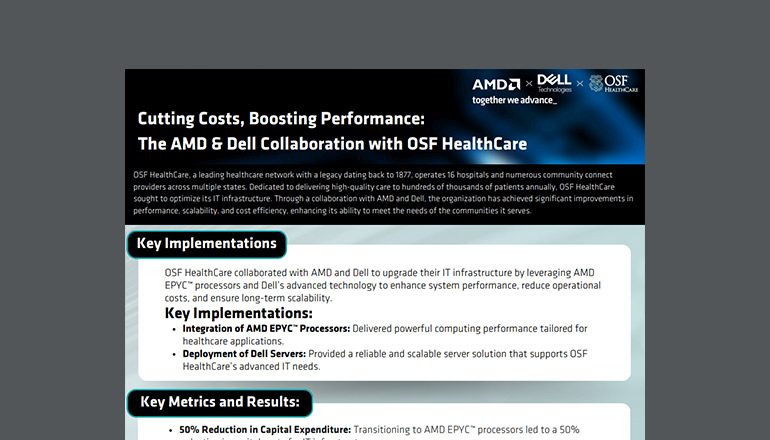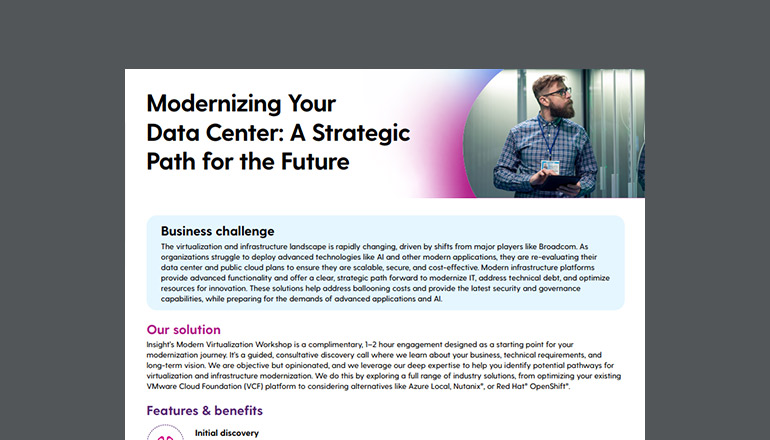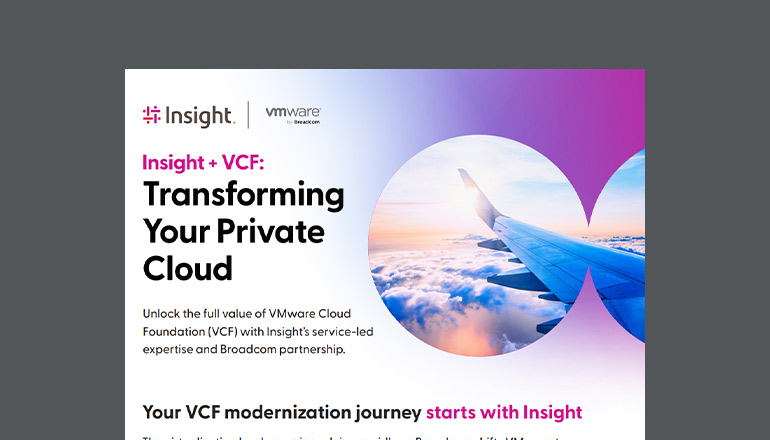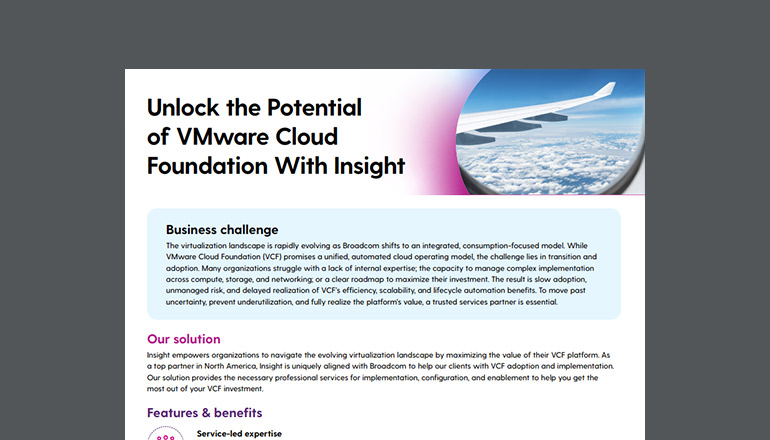Infographic text included for screen readers:
4 Tips to Optimize Your IT Budget
According to market research, 71% of IT decision-makers are focused on reining in operational costs. This infographic explores Insight’s top four tips to reign in costs, stretch your IT budget further and make a significant contribution to the success of your organization.
Tip #1: Create efficiencies through process automation.
The first way to achieve cost optimization is by being more efficient with the resources you already have. Many organizations are mired in manual processes, which reduce the effectiveness of your technology and people.
Save time and money by introducing automation wherever you have labor-intensive processes or tools.
66% of organizations are actively pursuing automation in 2020.
For example, the device refresh process is labor-intense and logistically complex. You can introduce automation and reduce labor costs by outsourcing the process to a capable IT partner.
Where IT leaders say they’re introducing automation:
- 57% Business process and/or case management platforms
- 44% Robotic process automation
- 37% Image recognition/optical character recognition
- 36% Machine learning
- 32% Process mining, discovery and/or documentation
- 25% Chatbots, virtual and/or voice assistants
- 16% Natural language processing
- 10% Cognitive engines
Tip #2: Make employee experience a priority.
The productivity of your people is just as important as the efficiency of your IT. In fact, 56% of CEOs say employee productivity is of high concern. But you can’t expect to increase employee productivity without improving Employee Experience (EX).
The positive results of EX initiatives:
- 70% - Higher employee engagement
- 64% - Increased employee productivity
- 62% - Improved organizational resilience
- 61% - Improved organizational agility
66% of organizations that make EX a high priority see a positive impact on profitability.
However, the IT department rarely takes responsibility for EX:
40% of business executives say human resources is responsible for EX.
Less than 5% say IT is responsible for EX.
This should be a shared responsibility since the IT department can drastically improve the employee experience through convenience features, such as:
- Single Sign-On (SSO)
- Self-service IT support
- Modern apps to access legacy systems
- E-procurement storefront for hardware, software and services
Quote:
“Employee experience can result in increased productivity, higher devotion to work, less employee turnover, and higher profitability. These are the tangible results of an engaged workforce.”
- Michael Gretczko, Deloitte consulting principal.
Tip #3: Make the switch to subscription models.
Increasing cash flow liquidity is a common goal for many of our clients these days. Subscription models are the easiest way to achieve this.
51% of IT professionals report seeing reduced costs as a result of subscription models.
Also known as “Anything as a Service” (XaaS), subscription models let organizations consume IT functions (software, security, services, etc.) through a pay-as-you-go pricing structure. This eliminates the need for large, upfront investments and gives organizations greater flexibility and control over their finances.
Benefits of XaaS:
- Predictable monthly payments
- Faster Return on Investment (ROI)
- Continuous upgrades and simplified maintenance
- Greater flexibility and ability to innovate quickly
7 in 10 organizations see better ROI and lower TCO from XaaS adoption versus traditional IT.
Tip #4: Have fewer and better partners.
According to Deloitte’s “Tech Trends 2019” report, as much as 70% of the IT budget goes toward keeping business-critical technology systems running. Working with an IT partner to offset these costs can result in a savings of 25% to 45%.
Organizations that employ managed services typically increase operational efficiency by 45% to 65%.
However, having too many partners can have the opposite effect, draining your resources and increasing the complexity of your environment. Reduce costs and increase efficiency by consolidating to a single IT partner.
Quote:
“IT vendor consolidation is a strategic decision that — if undertaken correctly, alongside the right partners — can drive greater business value and position the enterprise for future growth.”
- Driving Business Value Through Vendor Consolidation, Insight
Qualities of a capable IT partner:
- Exhibits expertise across many IT specialties
- Demonstrates value beyond financial metrics
- Has strong relationships with multiple IT manufacturers
- Offers automated processes and a large portfolio of integrations
Sources:
Deloitte. (2018). Accelerating Agility with XaaS.
Everest Group. (2020, May 29). How Are You Preparing for the “Next Normal”? | Market Insights™.
Harvard Business Review Analytic Services. (April 2020). Making Technology an Integral Part of Your Employee Experience Strategy.
Insight. (2020, June 15). Driving Business Value Through Vendor Consolidation.
McKinsey & Company. (2020, Aug. 25). The Imperatives For Automation Success.
Mordor Intelligence. (2019). Managed Services Market Size, Share - Growth, Trends, And Forecasts (2020–2025).
The Predictive Index. (2020). CEO Benchmarking Report 2021.






